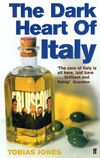For those of us who are trying to make head or tail of a second language, it does not hurt to give a little thought to the struggle that each one of us made to learn our fi rst. How Babies Talk by Drs Roberta Michnick Golinkoff and Kathy Hirsch-Pasek adds to the enormous parenting literature a little gem of the genre. It manages effectively to distil the equally huge amounts of related scientific literature into a manageable and easily comprehensible volume.
The experience of a newborn baby is not unlike someone arriving in a new country with no idea of the language, unable even to pick out single words from the flow of unfamiliar gobbledigook. Babies start analysing then gradually sorting out individual words, patterns and cadences of speech. They help themselves in this process by babbling – trying the sounds out for size, before they can actually understand what they hear. Meanwhile, unspoken communication begins. Pointing and giving meaningful glances are crucial steps. Real communication happens when Baby understands that when you point, Mummy brings you what you want. As for understanding other people’s pointing—that takes a little longer, and a baby of 9 months will just look wonderingly at the tip of your fi nger when you point. Spoken language comes as the child’sinterior world expands. When they discover something new they want to express, children actually work to invent the necessary language in their own mind. They create new words and symbols for things in the world, discarding them if they do not get results. When Dr Linda Acredolo’s 12-month-old daughter, Kate, caught sight of an aquarium full of fish, she toddled towards it, ‘pointing excitedly and making a blowing gesture’.
Linda couldn’t figure out why blowing would stand for the concept of fish until later that night. She then realized that she and Kate took turns each night blowing the fi sh on a fi sh mobile over Kate’s crib. During this game, Linda would comment on how the fi sh were swimming.
The environment too, is crucial. One comparative study of language and social class found that the average welfare child heard only 616 words an hour, the working-class child 1,251 words and the child of professional parents, 2,153. The style of the language was different as well, with richer parents likely to show more interest in the child’s object of interest, and to be more positive. The average professional child heard 32 affirmatives and 7 prohibitions an hour, the working-class child 12 affi rmatives and 7 prohibitions, and the welfare child 5 affi rmatives and 1 prohibitions. By the time a child is 4, the effect of these environmental factors on language is probably irreversible.
Clearly the language learning urge is hard-wired into all of us. The message for, adult learners is that we should work to create the right circumstances, and then just open our eyes, ears and mouths.







